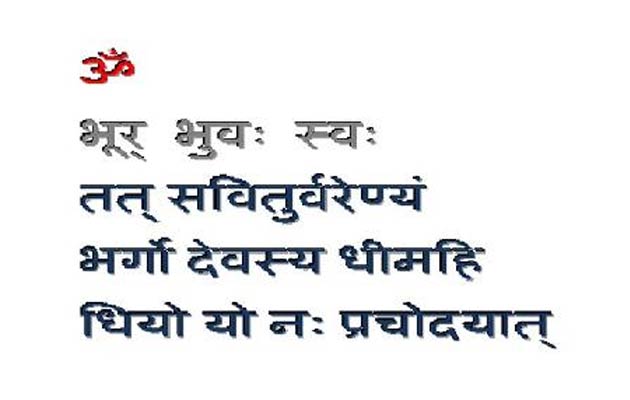KINDS OF MANTRAS
Posted on 02/06/2015 I by: Astroblessing

Mantras belong to different categories,among them the most important are the following
1. Vedokta Mantras,
2. Pauranik mantras,
3. Aagama mantras,
4. Savar mantras,
5. Living personified mantras or
Divya Vigrah mantras.
1.Vedokta Mantras:
The mantras that we come across in the Vedas have been seen or experienced by the Vedic Seers. Vedic mantras contain eternal truths and these truths have existed from eternal time. Therefore, they can only be seen or experienced by Sages who undertake tapasya or penance and make themselves fit instruments for the perception of truth. Thus, they are not composers of mantras but are called Drashtas. These mantras have been passed on from generation to generation through a system or oral tradition. These Vedokta mantras, belong also to what are called shrutis or what have been heard by the Sages. They contain all the principles and truths that are necessary for the maintenance of this universe and the progress of humanity.
2. Pauranik mantras:
As time passed these Vedokta mantras became obscure and men were not able to understand them fully. Only a few people who had the capacity for sustained study could understand and utilize these mantras. Therefore, Vyas maharshi out of compassion for humanity rendered these Vedic mantras in simple language and produced Eighteen Puranas.The purpose of these puranas was to enable the common men and women to easily understand spiritual truth contained in the Vedas. So, the puranas give to the common man and the same wisdom found in the Vedas in a simple and easy to understand manner.
3. Aagama mantras:
Vedokta mantras and Pauranik mantras impose upon the people certain special qualifications, disciplines and other principles and rituals. Even these were found to be difficult of observance by the people. Further, with the passage of time these also lost their meaning and significance to humanity which became more and more materialistic. The people lost their capacity for penance and hard discipline. Under these circumstances many spiritual masters, realizing the weaknesses of people, tried to simplify the mantras so that they could be more easily utilized. Thus we have the Agama in which are found the mantras of Pragat Upasana of Ista Devata or real Braminised Sadguru worshipping the Almighty God or Supramental Adya Shakti in the personal divinised form instead of imaginary external worship and the mere japa without understanding the real meaning. These mantras are the Agama manstra.
4. Savar manstras
Some Siddhas who attained the highest spiritual status through Sadhana and the worship of a chosen Ista Devata or Goddess acquire such power that by their mere utterance of one word or sentence, our desire or our work gets fulfilled. Such words or sentences are known as Savar mantras. These mantras have to be employed after the blessing and guidance from the mantras siddha Gurus.
5. Divya Vigrah mantras:
The acid test of any mantras lied in its authenticity and in its effectiveness in this life and in this world for generating and attaining immense power, shakti, especially, siddhi and realization of Eternal Truth. Hence, Mantras Siddhi is the key point in the real Tantric system and that is why Mantra which is capable of enabling the Sadhak to Self-realisation and perfection in this life is called “The Living Mantra.”
"In today’s world where even a small child does not easily put faith in anything without verification naturally, those who want to achieve supernatural powers and Siddhis, liberation and self-realisation. Only those Mantras are called “The Living Mantras” or the Creative Dynamic Mantras."

